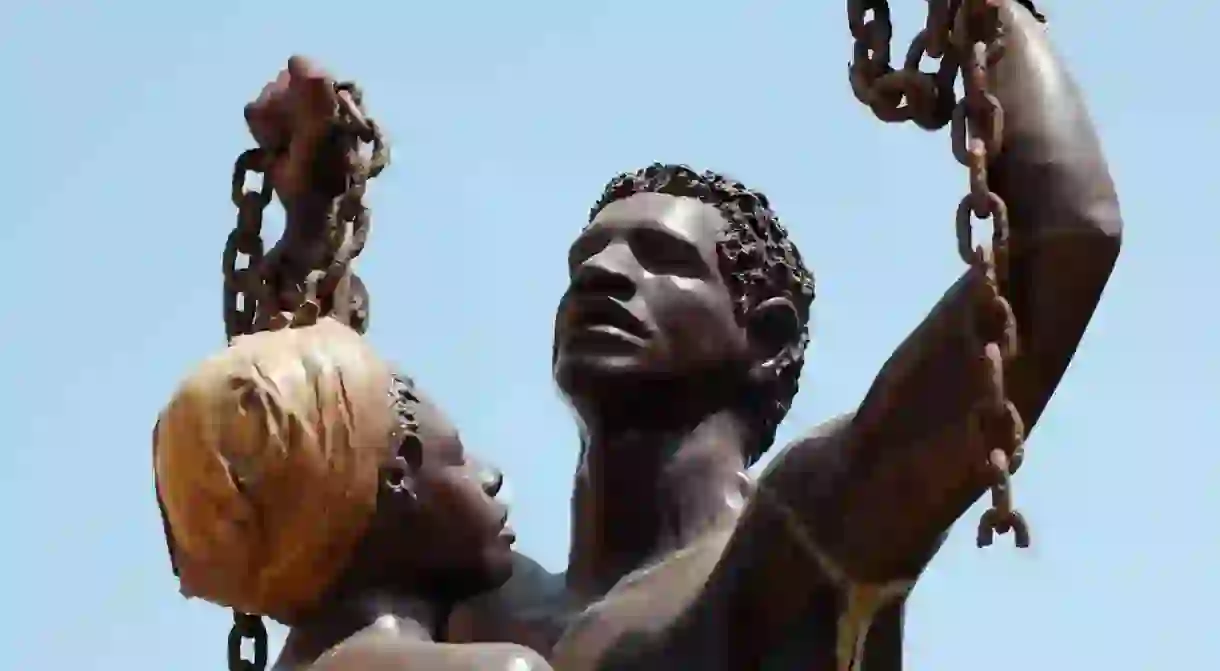Dakar's Most Striking Monuments

Dakar is a city of monuments. Home to the tallest statue in Africa, Senegal’s capital also boasts a number of striking memorials that shed a fascinating light on both Senegalese and African history.
Place de l’Obélisque
Historical Landmark

The Place de l’Obélisque commemorates Senegal’s independence from France | © Beetle Holloway / Culture Trip
Gorée Memorial
Historical Landmark

The Gorée Memorial is a pilgrimage site for the African diaspora | © Beetle Holloway / Culture Trip
La Porte du Troisième Millénaire
Historical Landmark

La Porte du Troisième Millénaire was designed by architect Pierre Goudiaby Atepa | © Beetle Holloway / Culture Trip
Place du Souvenir Africain (Africa Monument)
Historical Landmark

The Place du Souvenir (Africa Monument) is a symbol of Africa’s impact in the world | © Beetle Holloway / Culture Trip
The Mermoz Thinker
Historical Landmark
It’s not quite Rodin’s Le Penseur, but the ‘Mermoz thinker’ is a reference to the education and educators of Africa. Tucked away in a housing estate originally built for teachers in the central district of Mermoz (named after French aviator Jean Mermoz), it’s a blink-and-you’ll-miss-it monument that has been immortalised in wooden carvings by numerous beachside vendors and marketplace artisans. Inaugurated in 2002, the monument’s supporting cast includes supremos Pierre Atepa and Abdoulaye Wade, as well as former Gambian President Yahya Jammeh.
Monument de la Renaissance
Historical Landmark

In Dakar, the Monument de la Renaissance is simply known as ‘the Monument’ and for good reason: the 49-metre-high (161-foot-high) bronze statue is the tallest monument in Africa and looms over the Dakar skyline from its hilltop perch in the west of the city. It’s also the country’s most controversial tribute. Built by the North Koreans at a cost of $27 million in 2010, it has been criticised for being expensive, unnecessary, macho, religiously insensitive and for bearing a resemblance to former Senegalese President, Abdoulaye Wade, who commissioned it (and still retains 35 percent of the Monument’s profits). However, scaling the 198 steps to the base of the Monument will not add to Wade’s coffers (it’s free), and on a clear day it offers unbeatable views across Dakar.
Demba and Dupont
Historical Landmark

The Demba and Dupont statue has come to symbolise the valour and loyalty of African fighters | © Beetle Holloway / Culture Trip
Monument de Léopold Sédar Senghor
Historical Landmark
Another one of the ‘blink and you’ll miss it’ monuments, but this time it’s for arguably Senegal’s most famous individual, Léopold Sédar Senghor. Opposite the museum dedicated to his legacy, the iconic spectacled figure of Senegal’s poet-president sits on a chair of bronze with an ocean backdrop and usually a coffee stand for company. Presiding over the first 20 years of Senegal’s independence, Senghor is credited with laying the foundation for Senegal’s current stability and was a driving force of the Negritude movement, which he co-founded.
Want to experience more of Dakar? Check out these fantastic tours!
Historical Landmark

Dakar is a dynamic city rich in adventure, culture, and history! Explore Gorée Island’s rich history, stroll through vibrant markets, or enjoy the Corniche’s stunning coastal vistas. There’s so much to explore, from vibrant music scenes to mouthwatering local cuisine. For a once-in-a-lifetime adventure, look for knowledgeable-led excursions online and venture further into the center of Dakar!













